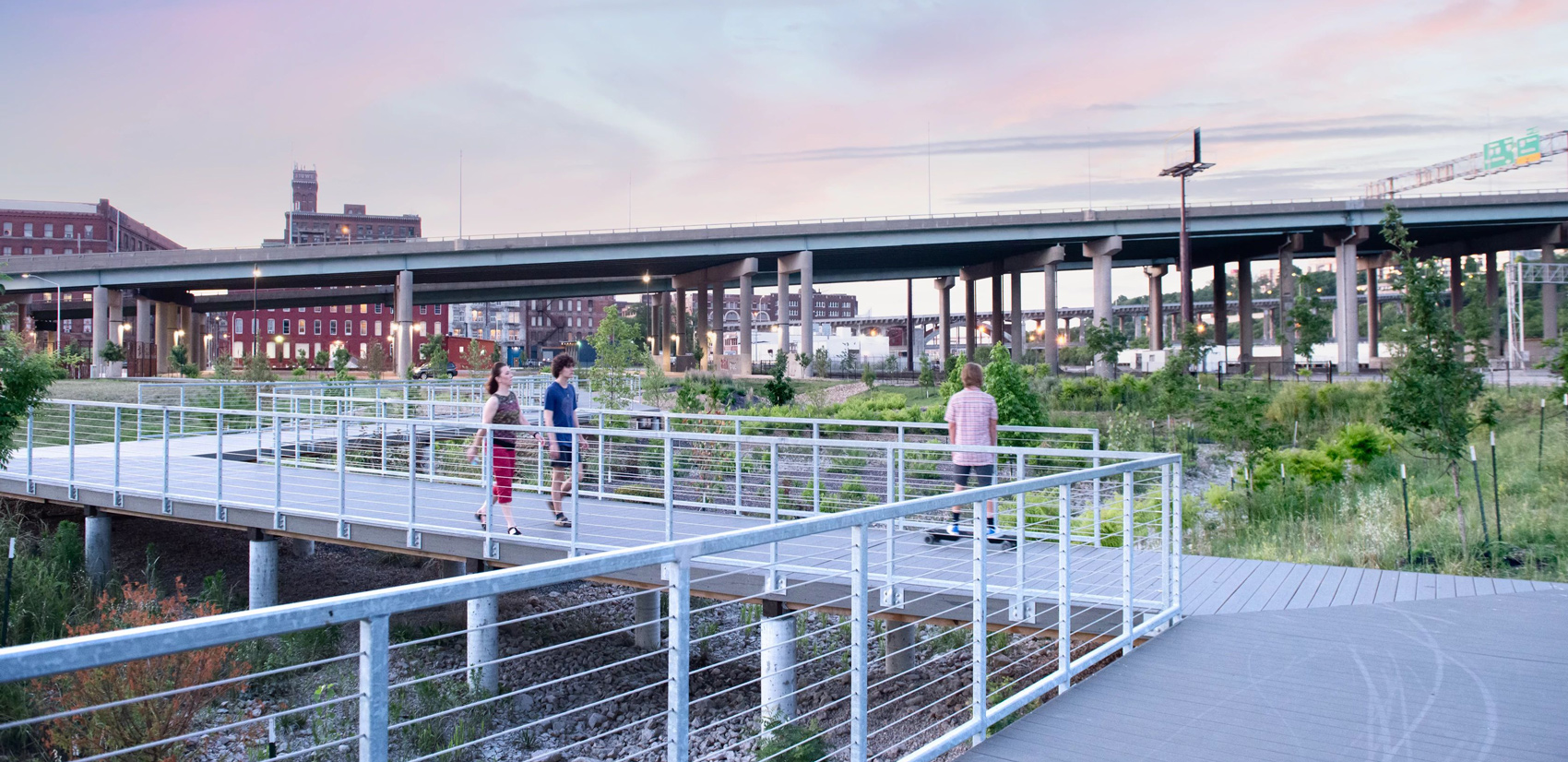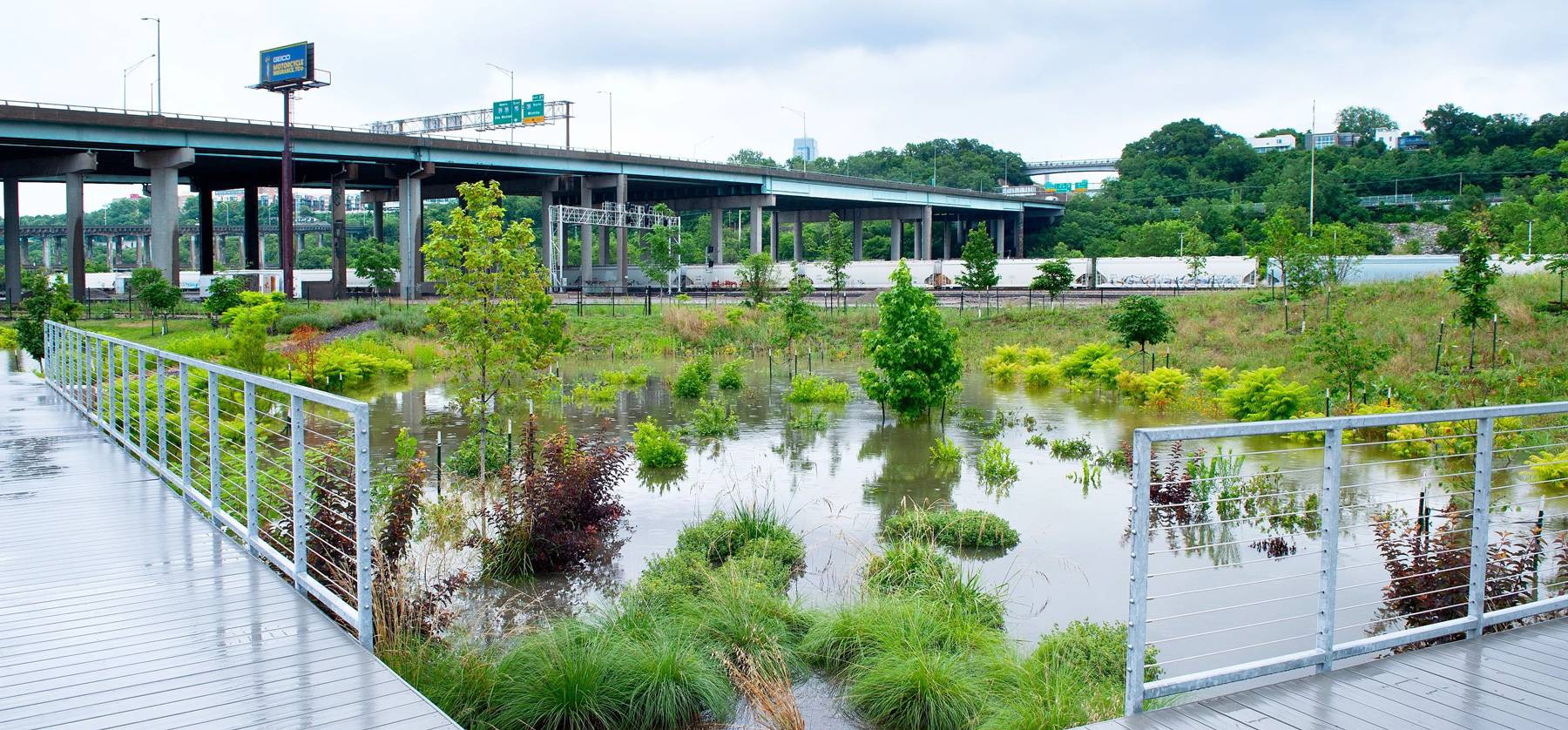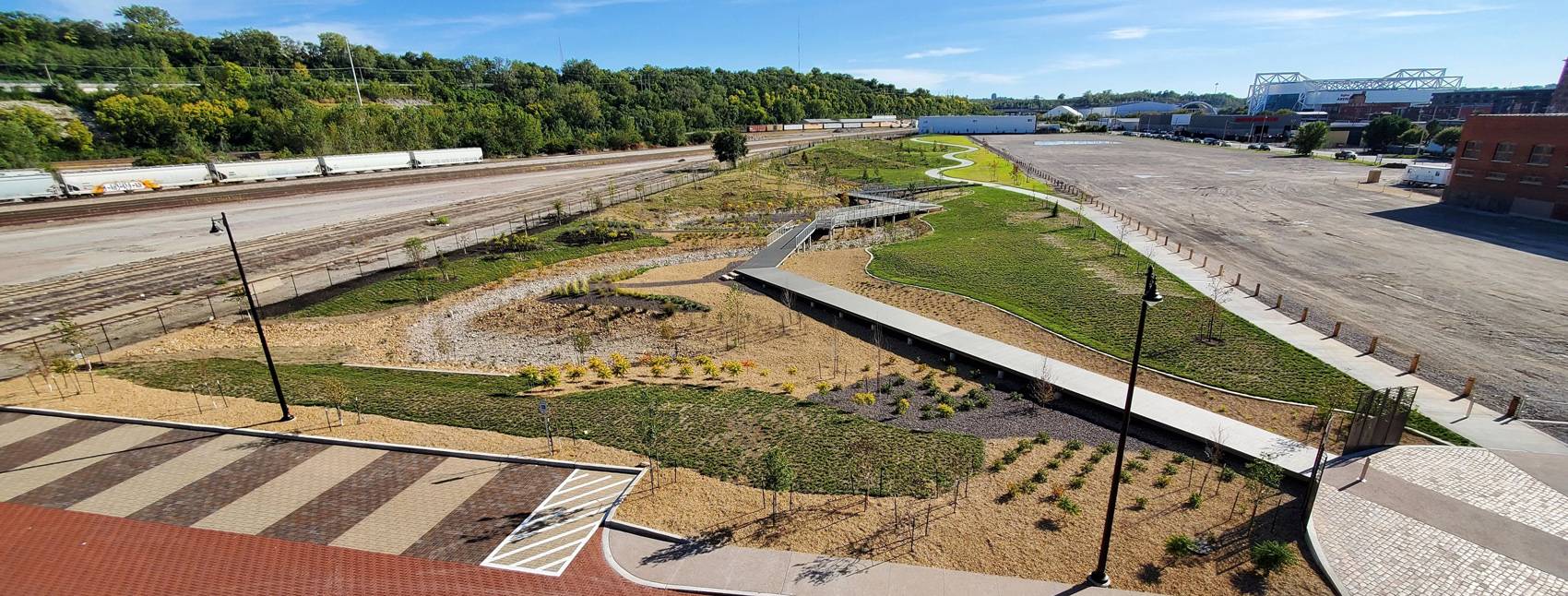
19th century water management gets 21st century overhaul
DESIGNER
2023
The West Bottoms in Kansas City, Missouri’s Central Industrial District (CID) is one of the city’s oldest historic neighborhoods and home to the famous Kansas City Stockyards, a former epicenter of the region’s livestock industry, which flourished there from 1871 to 1991.
It also was an area with a combined sewer system. Stormwater and sewage flow through the same pipes, which presents hazards given the Bottom’s low elevation, its location on the banks of the Missouri and Kansas Rivers and ongoing residential and commercial developments that are bringing more people into the area. All these factors elevated the already existing risk of flooding in heavy rains. To mitigate factors, an initiative pilot — the CID Green Infrastructure Project — in the historic West Bottoms was launched as part of Kansas City Water’s Smart Sewer program.
Color of smart is green
Through the Smart Sewer program, the City of Kansas City, Missouri began work to update the water systems in older neighborhoods through sewer separation, inflow and infiltration and an approach becoming more popular in urban areas — green infrastructure. It is a relatively cost-effective approach to urban development that mitigates flooding by combining or replacing existing infrastructure with more organic processes to manage water. In the West Bottoms, it also created green space, reestablished natural ecosystems and drove public engagement and ownership.
“The city had completed some other green infrastructure projects, but not with the same approach — this particular project was really unique,” said Tom Poer, HNTB project director. “With this project we were able to utilize several contextual applications of green infrastructure.”
The CID Green Infrastructure Project implemented five primary approaches: sewer separation, stormwater collection in cisterns, bioswales, bioretention basins and permeable pavers. The permeable pavers included rock storage infiltration that feed dry wells resulting in water diverted from the combined sewers.
“The West Bottoms are in a floodplain with a lot of alluvial and sandy soils that drink the water up and pull it in,” explained Poer. “Now, we collect that water into a header pipe that goes into eight dry wells through groundwater injection diverts. Water that would have gone into those combined sewers is now redirected into the water table.”
The cisterns were constructed to collect water runoff for reuse from I-70, a major elevated highway that runs across the historic West Bottoms. This collected water is now used to irrigate the new green space and other sites throughout the area.
In addition to the cisterns, the area along the rivers was dotted with gravel infiltration basins that reduced the flow of stormwater and created significant amounts of rock surface. The Missouri Department of Transportation leases the land and that, in turn, has enabled MoDOT to sublet those areas, creating a new income stream for the state.



Growing relationships
HNTB’s long relationship with KC Water was crucial to the success of the project as well as multiple relationships that needed to be established, respected and maintained with the West Bottom’s commercial and residential landowners and tenants.
Many of the buildings are large brick warehouse type structures built in the stockyard’s heyday. The challenges they presented from a water standpoint were downspouts inside the buildings that emptied into the combined sewers.
“We worked with the landowners to come up with strategies to capture water off their roofs and bring it into the green infrastructure system,” Poer said. “They became stakeholders, and because we had their buy in, they continue to keep their eyes on it. In fact, some of them said, ‘Since this project, I haven’t had a drop of water in my basement.’ It wasn’t a project goal but a wonderful bonus.”
The project demonstrates the potential benefits of using green infrastructure for managing stormwater in urban areas, and its overall success in Kansas City can be attributed to robust collaboration, innovation and community engagement.
Green where once was gravel
Though first and foremost a consent decree project to reduce sanitary sewer overflow, KC Water was eager to take advantage of opportunities to make the area and neighborhood more inviting to the public. The bioswales and bioretention basin, integral to resisting deep flows in the event of floods, provided one.
“This is a green infrastructure project, not a park. But when we took this on, we had a clean slate and an opportunity to make infrastructure visible to the public,” said Tom Poer, HNTB project director. “An incredible amount of landscape design backed by sound hydraulics went into the solution.”
The result is eight acres of green space on what was a gravel parking lot. It includes a partially elevated boardwalk that winds through a lush new green landscape. It is planted with native trees, shrubs and grasses and, in adherence with the principles of green design, respect for the old was paid by incorporating it into the new.
The 668 square feet of the new green space’s project area includes the West Bottom’s original 100+ year old sett stones, quarried stone that was commonly used in the 18th and early 19th centuries to pave streets because it provided better traction for horses’ hooves. The neighborhood’s sett stones were included in the gateway as well as being recovered, crushed and repurposed to create colored, textured and permeable surfaces at the boardwalk’s entrance.
The pathway includes decorative lighting, seating areas with planter boxes and signage that identifies and describes the plantings. Altogether the project added 330 trees, 1,104 shrubs, 316 grass varieties and 7,063 species of wildflowers.
SEE MORE ARTICLES
MORE DESIGNER STORIES
Fish Passage
Toll Relief Program
KC Levees Program
Orange Line BRT
Denver International Airport A-West and B-West Concourses
